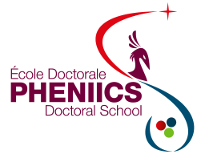Orateur
Mlle
Lisa Belkacemi
(CEA Saclay)
Description
Reactor pressure vessel (RPV) steels embrittlement under neutron irradiation is the main lifetime limiting factor of nuclear reactors. The RPV embrittlement is primary due to the impeding of dislocation glide caused by their interaction with nanometric clusters composed of point defects and/or solute atoms which form under irradiation. Point defect clustering can lead to the formation of crystallographic defects such as dislocation loops or voids.
In this study, the effect of Mn in an under-saturated ferritic Fe1at.%Mn model alloy was experimentally investigated at the atomic scale by Transmission Electron Microscopy (TEM) and Atom Probe Tomography (APT) on ion-irradiated samples. The irradiation with 10 MeV Fe5+ ions was performed at 400°C at a nominal damage rate of 10-4 dpa.s-1 to a nominal displacement damage of 2.5 dpa.
The detailed analysis shows that the microstructure totally depends on the composition. In pure Fe, an homogeneous distribution and a significant number density of both dislocation loops and voids were revealed. However, in Fe1at.%Mn, a high number density of dislocation loops was observed, in opposition to voids. Radiation-Induced Segregation (RIS) of Mn was recorded by STEM/EDX in the vicinity of dislocation loops and grain boundaries, according to observations made on dislocation lines. An additional analysis realized by APT supported these observations by showing Mn depletion within the matrix. The results obtained indicate that Mn would significantly contribute to swelling reduction. Diffusion mechanisms of solute atoms leading to the preferential formation of dislocation loops or voids are still not well understood under irradiation.
To go further, we plan to carry out in-situ irradiation of Fe1at.%Mn samples using charged particles such as ions. Setting imaging and irradiation conditions using ions would enable us to better understand how irradiation defects form while taking into account the cascade effect.
Auteur principal
Mlle
Lisa Belkacemi
(CEA Saclay)



